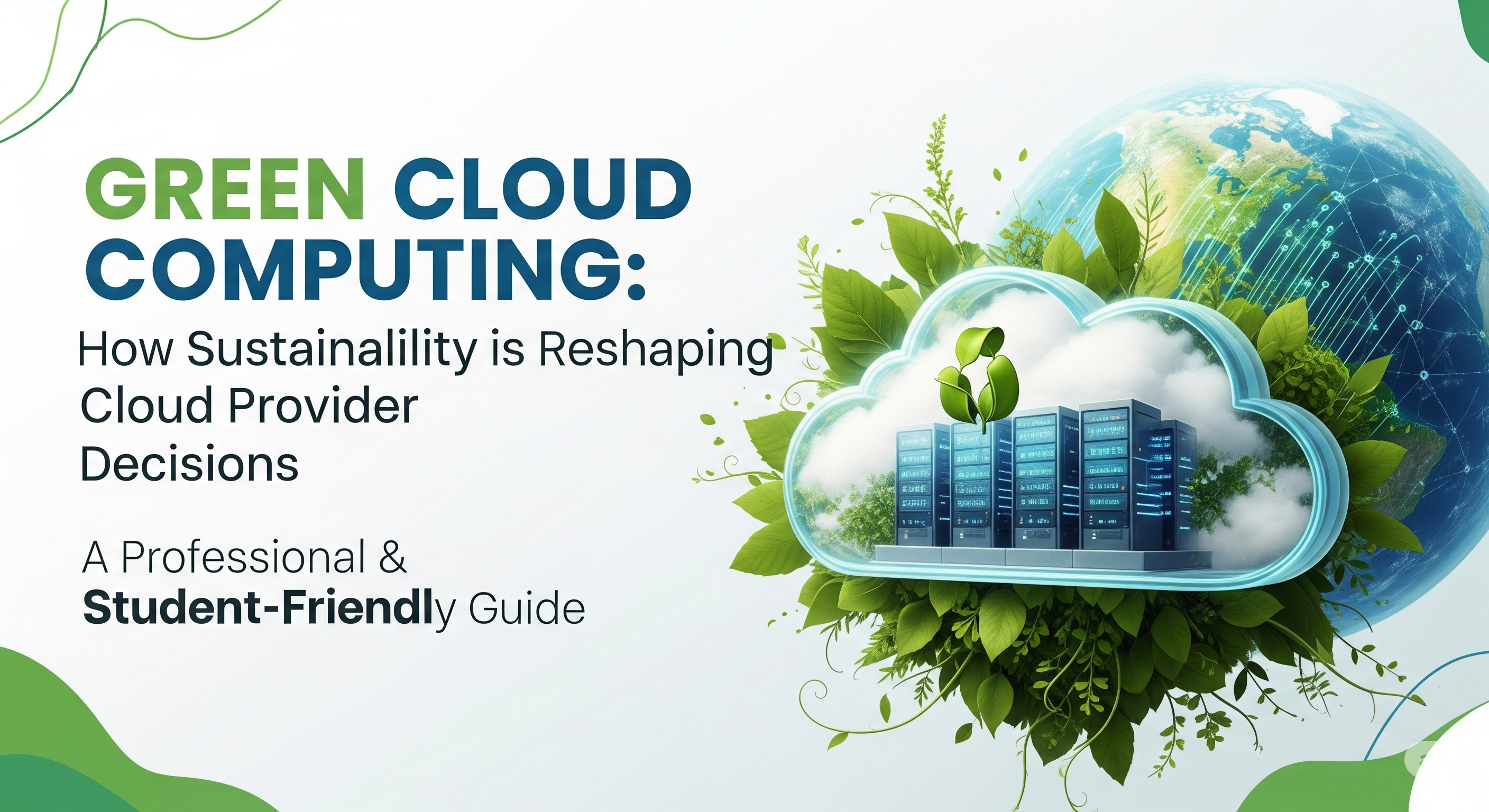
Green Cloud Computing: How Sustainability is Reshaping Cloud Provider Decisions
Introduction
In today’s digital-first world, cloud computing has become the backbone of businesses worldwide. From storing data to running applications, the cloud enables speed, scalability, and flexibility. However, as the demand for cloud services grows, so does its carbon footprint. Data centers consume massive amounts of electricity and contribute to environmental challenges.
This is where Green Cloud Computing comes in — a modern approach that combines cloud technology with sustainable practices. Cloud providers are now rethinking infrastructure, energy sources, and deployment strategies to align with global sustainability goals.
In this blog, we’ll explore what green cloud computing is, why it matters in 2025, and how it’s reshaping provider decisions.
What is Green Cloud Computing?
Green cloud computing refers to the design, implementation, and usage of cloud services with minimal environmental impact. It ensures that the storage, processing, and delivery of data happen in energy-efficient ways while reducing greenhouse gas emissions.
Key strategies include:
-
Using renewable energy sources (solar, wind, hydro).
-
Optimizing data center energy consumption.
-
Leveraging virtualization and server consolidation.
-
Adopting AI-driven energy optimization models.
✅ Related Reading: Types of AI Models: What They Are and How They Work
Why Sustainability Matters in Cloud Computing
According to reports, data centers worldwide account for 2–3% of global electricity consumption — and this is expected to rise rapidly as cloud adoption increases. Organizations are now under pressure to balance innovation with responsibility.
For businesses, adopting sustainable cloud solutions offers multiple benefits:
-
Reduced Carbon Footprint – Lower greenhouse emissions.
-
Cost Savings – Energy-efficient data centers reduce operational expenses.
-
Compliance – Governments are introducing stricter environmental regulations.
-
Brand Reputation – Companies gain trust by aligning with sustainability.
-
Innovation – Green strategies encourage the use of cutting-edge technologies.
How Cloud Providers Are Adopting Green Strategies 1. Renewable Energy-Powered Data Centers
Major cloud providers like AWS, Google Cloud, and Microsoft Azure are investing heavily in renewable energy projects to power their facilities. Google Cloud, for instance, has pledged to run on 100% carbon-free energy by 2030.
2. AI & Machine Learning for Energy OptimizationAI models are being used to predict cooling requirements, optimize server load distribution, and reduce waste. This is an emerging trend reshaping smart data center management.
3. Server Virtualization and Workload ConsolidationBy consolidating workloads and using virtual servers, providers can maximize efficiency and cut down on excess hardware.
4. Sustainable Hardware & RecyclingCloud companies are now adopting circular economy models, recycling old equipment and designing hardware with sustainability in mind.
5. Carbon-Neutral CommitmentsSome providers offer carbon offset programs where customers can choose eco-friendly cloud deployments.
Green Cloud in 2025: Trending Practices
-
Carbon-aware cloud computing: Running workloads when renewable energy is most available.
-
Water-efficient cooling: Using AI-driven liquid cooling systems.
-
Decentralized edge computing: Reduces latency and energy use.
-
Blockchain-based sustainability tracking: Ensures transparency in energy usage.
-
Green AI: Training models with minimal energy impact.
✅ Related Reading: What is SearchGPT? Details about OpenAI’s Search Engine
How Businesses Can Leverage Green Cloud Computing 1. Evaluate Cloud Provider Commitments
When choosing a provider, businesses should review their sustainability pledges and progress reports.
2. Implement Cloud Cost OptimizationTools like FinOps and automated scaling not only reduce expenses but also improve environmental impact.
3. Use Sustainable ArchitectureDesign cloud-native applications with energy efficiency in mind. For instance, serverless computing reduces idle resource usage.
4. Monitor Sustainability MetricsCompanies should track their cloud energy usage and carbon emissions via dashboards.
The Future of Cloud is Green
The shift toward sustainable computing is no longer optional—it’s a business necessity. Customers, regulators, and investors are demanding environmentally conscious solutions.
By embracing green cloud computing, providers and businesses can contribute to global climate goals while also achieving economic efficiency.
At the same time, professionals looking to grow in the tech industry should stay updated with cloud sustainability practices.
If you want to build skills in Cloud Computing, DevOps, and Green IT strategies, check out our Professional Cloud Courses.
Conclusion
Green Cloud Computing is reshaping the future of IT infrastructure. From AI-powered optimization to renewable-powered data centers, the cloud industry is moving toward sustainability. Businesses that adopt green strategies not only reduce costs but also strengthen their reputation and compliance.
As we move further into 2025, sustainability will remain a core decision-making factor for cloud providers and enterprises alike.






